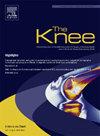在当代全膝系统中,采用十字关节保留活动轴承与后稳定活动和固定轴承的一年遗忘关节评分比较。
IF 1.6
4区 医学
Q3 ORTHOPEDICS
引用次数: 0
摘要
背景:全膝关节置换术(TKA)主要包括股骨、胫骨和轴承植入物。轴承根据后交叉韧带(PCL)状态(cross - ate- stay [CR] vs.后稳定[PS])和运动(可移动vs.固定)进行分类。本研究评估了三种轴承组合(CR Mobile, PS Mobile和PS Fixed)对TKA后一年患者报告的结果测量(PROMs)的影响。方法:回顾性分析486例使用相同假体不同方位的tka患者,将患者分为CR Mobile, PS Mobile和PS Fixed。收集患者特征、术前和术后一年的PROMs(遗忘关节评分[FJS]和膝关节社会评分[KSS],以及安大略省西部和麦克马斯特大学骨关节炎指数[WOMAC])。采用多变量分析评估轴承类型对1年PROMs的影响。结果:多变量回归模型显示,轴承类型对1年FJS有显著影响,其中CR Mobile得分高于PS Mobile和PS Fixed轴承(p < 0.05)。结论:本研究首次分析了PCL状态与轴承运动结合对TKA的影响。轴承类型选择对术后一年的FJS有影响,特别有利于CR移动轴承。其他prom不受轴承类型选择的影响。本文章由计算机程序翻译,如有差异,请以英文原文为准。
Superior One-year Forgotten Joint Scores with cruciate-retaining mobile bearings versus posterior-stabilized mobile and fixed bearings in a contemporary total knee system
Background
Total knee arthroplasty (TKA) mainly involves the femoral, tibial, and bearing implants. Bearings are categorized by posterior cruciate ligament (PCL) status (cruciate-retaining [CR] vs. posterior-stabilized [PS]) and motion (mobile vs. fixed). This study assessed the impact of three bearing combinations (CR Mobile, PS Mobile, and PS Fixed) on one-year patient-reported outcome measures (PROMs) following TKA.
Methods
In this retrospective analysis of 486 TKAs using the same prosthesis with varied bearings, patients were grouped as CR Mobile, PS Mobile, and PS Fixed. Patient characteristics, preoperative, and one-year postoperative PROMs (Forgotten Joint Scores [FJS] and Knee Society Scores [KSS], and Western Ontario and McMaster Universities Osteoarthritis Index [WOMAC]), were collected. Multivariate analysis was conducted to assess the impact of bearing type on one-year PROMs.
Results
The multivariate regression model showed that bearing type significantly impacted the one-year FJS, with CR Mobile showing higher scores than PS Mobile and PS Fixed bearings (p < 0.001). However, bearing type did not significantly influence one-year KSS and WOMAC scores (all p > 0.05).
Conclusion
This study was the first to analyze the impact of the combination of PCL status and bearing motion in TKA. Bearing type selection had an impact on the one-year postoperative FJS, particularly favoring CR Mobile bearings. Other PROMs were not affected by the choice of bearing type.
求助全文
通过发布文献求助,成功后即可免费获取论文全文。
去求助
来源期刊

Knee
医学-外科
CiteScore
3.80
自引率
5.30%
发文量
171
审稿时长
6 months
期刊介绍:
The Knee is an international journal publishing studies on the clinical treatment and fundamental biomechanical characteristics of this joint. The aim of the journal is to provide a vehicle relevant to surgeons, biomedical engineers, imaging specialists, materials scientists, rehabilitation personnel and all those with an interest in the knee.
The topics covered include, but are not limited to:
• Anatomy, physiology, morphology and biochemistry;
• Biomechanical studies;
• Advances in the development of prosthetic, orthotic and augmentation devices;
• Imaging and diagnostic techniques;
• Pathology;
• Trauma;
• Surgery;
• Rehabilitation.
 求助内容:
求助内容: 应助结果提醒方式:
应助结果提醒方式:


